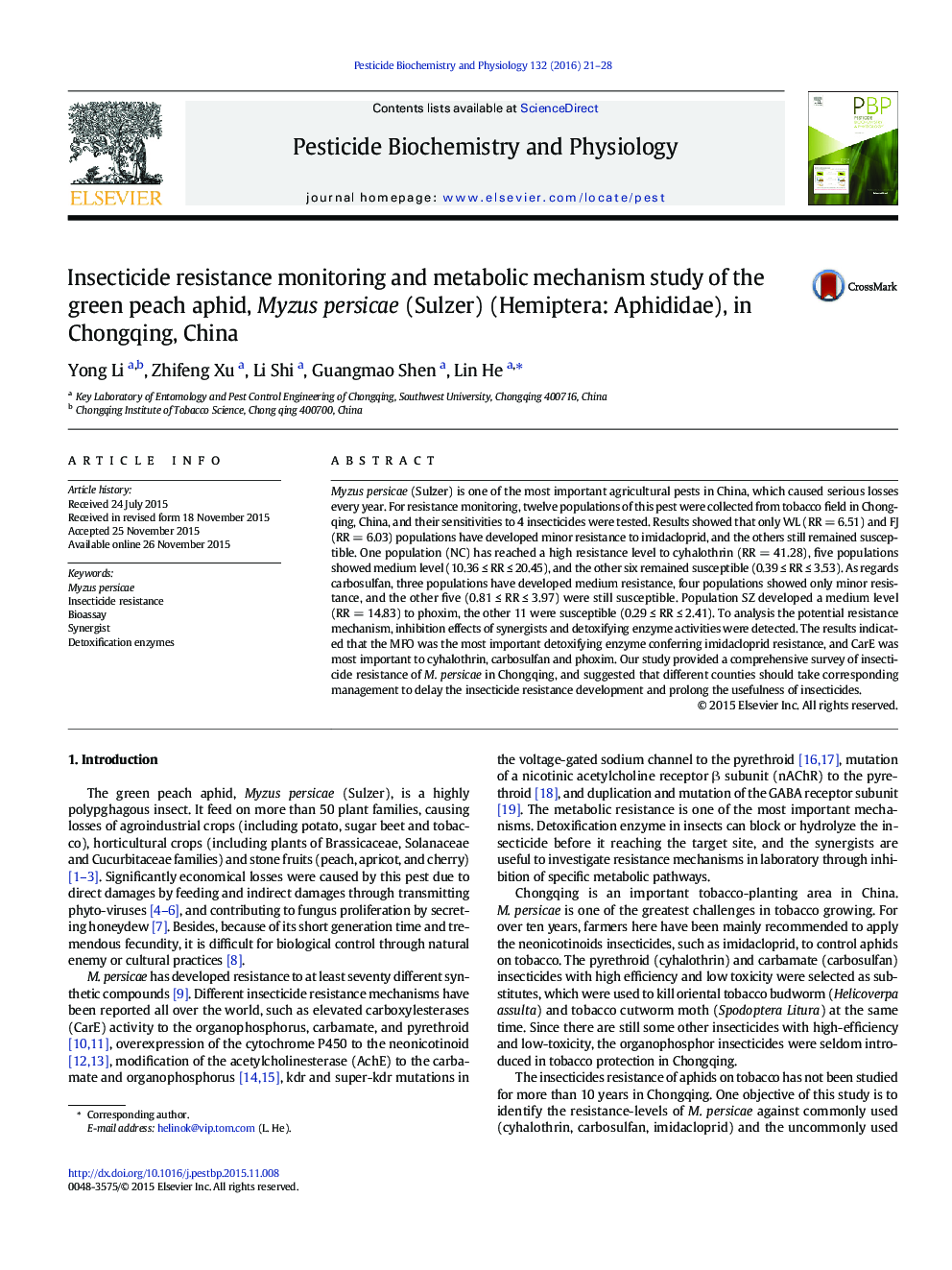| Article ID | Journal | Published Year | Pages | File Type |
|---|---|---|---|---|
| 2008916 | Pesticide Biochemistry and Physiology | 2016 | 8 Pages |
•This is the first report about insecticide resistance investigation of Myzus persicae in Chongqing, China.•The metabolic mechanism of insecticide resistance was studied by synergist-bioassay and detoxification enzyme activity test.
Myzus persicae (Sulzer) is one of the most important agricultural pests in China, which caused serious losses every year. For resistance monitoring, twelve populations of this pest were collected from tobacco field in Chongqing, China, and their sensitivities to 4 insecticides were tested. Results showed that only WL (RR = 6.51) and FJ (RR = 6.03) populations have developed minor resistance to imidacloprid, and the others still remained susceptible. One population (NC) has reached a high resistance level to cyhalothrin (RR = 41.28), five populations showed medium level (10.36 ≤ RR ≤ 20.45), and the other six remained susceptible (0.39 ≤ RR ≤ 3.53). As regards carbosulfan, three populations have developed medium resistance, four populations showed only minor resistance, and the other five (0.81 ≤ RR ≤ 3.97) were still susceptible. Population SZ developed a medium level (RR = 14.83) to phoxim, the other 11 were susceptible (0.29 ≤ RR ≤ 2.41). To analysis the potential resistance mechanism, inhibition effects of synergists and detoxifying enzyme activities were detected. The results indicated that the MFO was the most important detoxifying enzyme conferring imidacloprid resistance, and CarE was most important to cyhalothrin, carbosulfan and phoxim. Our study provided a comprehensive survey of insecticide resistance of M. persicae in Chongqing, and suggested that different counties should take corresponding management to delay the insecticide resistance development and prolong the usefulness of insecticides.
Graphical abstractFigure optionsDownload full-size imageDownload as PowerPoint slide
